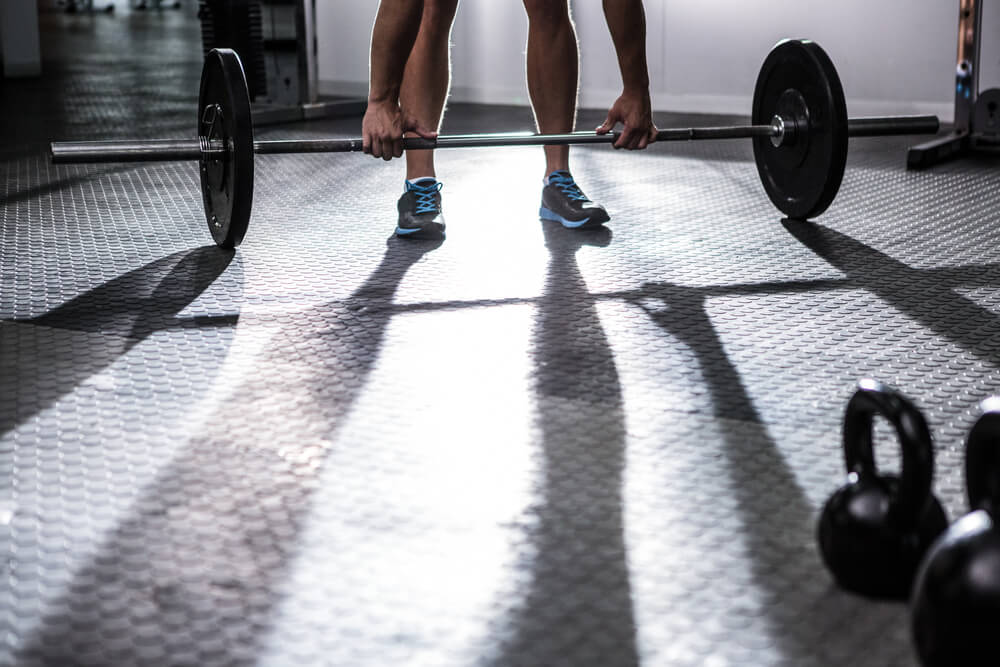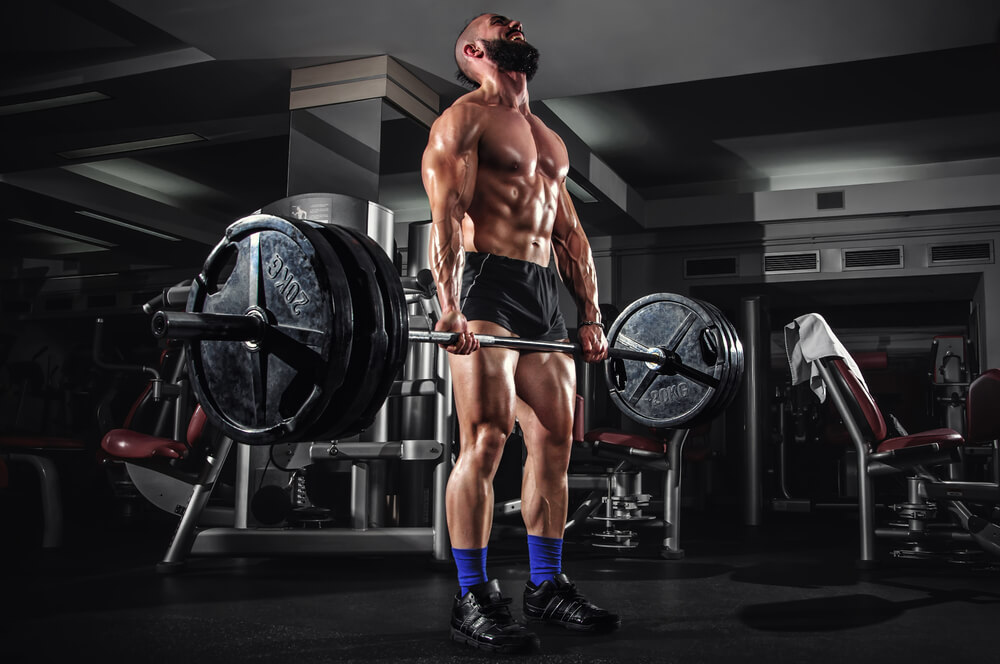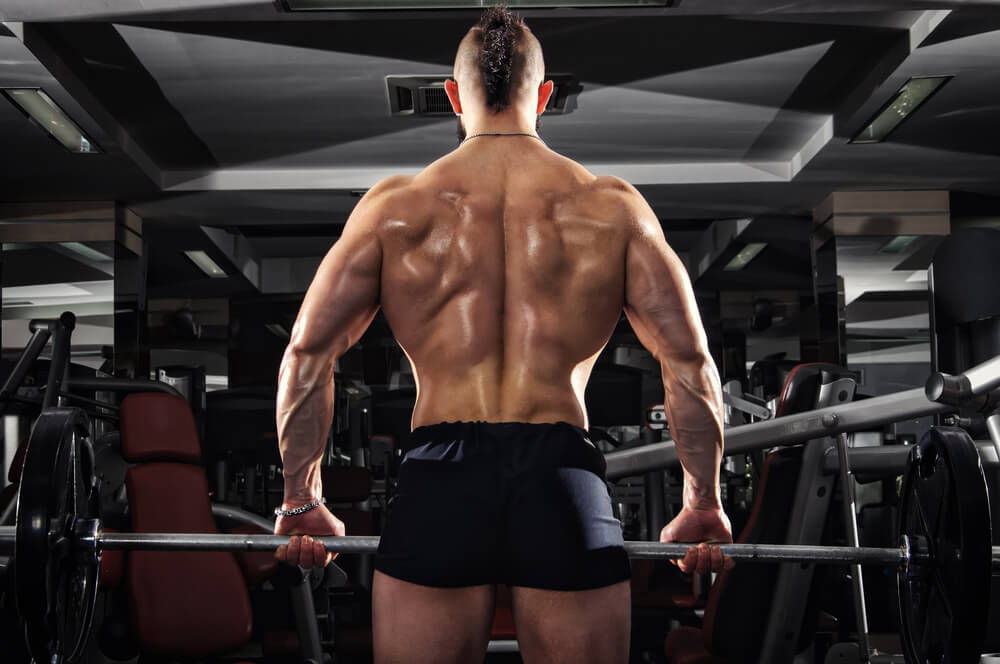
If you aren’t doing your fair share of deadlifts, you’re not giving it all in the gym. Make more out of your workouts with the rules of the best exercise you need to be doing.
The single most beneficial exercise that works your muscles from top to bottom would be the deadlift.
This could honestly be the only exercise you performed for the rest of your life and you would still look well rounded in all muscle regions. People often argue that squats are the best exercise. But, squats do not target anything on the upper body with the exception of tightening them to stay upright.
The conventional deadlift is the one we speak of that provides superior back training. There are two other deadlifts known as sumo deadlifts and stiffed legged deadlifts. We will cover all three so you have a better idea of what you are looking for when adding these to your workout programs.
What Exactly Is The Deadlift?
An exercise this good must be hard, right? Wrong. You position something heavy in front of you on the ground, bend over and then pick it up. That is basically all the deadlift is. But, its simplicity makes it such an effective exercise.
You can spot any person that deadlifts routinely because they possess a much more powerful and thicker looking back and traps that just can’t be obtained without this exercise. The reason for this is because deadlifts target the base of your erectors and make their way all the way up to your traps.
The deadlift places emphasis not only on your back, but your shoulders, glutes, hips and hamstrings are also primary muscle groups. All arms muscles, quads and calves come in as secondary muscle groups.
The effects end up being increased muscle growth and strength, but we also have to look at our hormones as well. Studies show that compound lifts, such as the deadlift, increase the release of testosterone and growth hormone (GH). This basically means you are able to develop some serious muscle mass and get a great workout in from the extra test boost.
The Art Of The Conventional Deadlift
There is actually an art to performing a proper deadlift without sustaining any injuries and reaching for muscular potential. We will cover the entire procedure to ensure you get the proper form down to a science, and get you on your way to deadlifting correctly.
How Do I Get Into The Proper Deadlift Position?
Preparing for the deadlift is just as important as performing the actual exercise. First and foremost, the bar needs to be on the ground. Some people place it on the lowest arms in front of the squat rack, which is improper and not a deadlift. Approach the bar on the floor and place your feet shoulder width apart from the center of the bar. Your feet should be facing straight forward or slightly outward if this is more comfortable for balance.
Drop your hips in as if performing squats until you are fully down and can grasp the bar. This is where you have the choice of hand positioning. Get a feel for what works best for you. First, there is the supinated grip, which is when you have your palms facing down towards your body with this exercise. You can use wrist straps for better grip with this hand placement.
The other is called the alternate grip, which is when one hand is supinated and the other is pronated. This is the recommended grip to use. But, you should use what feels the most comfortable to you. After choosing your grip, place your hands just beyond shoulder width apart to where they are just outside your legs.

Positioning Your Body
Place your head in a neutral position where you are looking forward with your chin slightly up, but not looking at the ceiling. This could cause body imbalances and make you falter moving the weight. Your back should never be rounded. Keep it in a neutral position as much as possible. Only pro deadlifters round their back for competitions.
Your hips should be down to where your shins are just about to touch the bar in a vertical-like position. Some trainers may advise a higher hip placement, but this is intended for people with longer arms and shorter torsos. If this applies to you then by all means use that stance.
But, the average person will end up locking their knees too soon, which puts you in a pickle when your lower back is doing the rest of the pull.
That concludes the deadlift positioning portion. But, that’s only the start. There’s a right way and there are wrong ways to move the weights. Don’t risk injury. Follow the directions we’re about to detail.
Initiating And Performing The Deadlift
You have the weights racked onto the bar, and are now in the proper deadlift position. Next you will learn the process of lifting the weight off the floor, locking out your body and returning the weight down to the floor.
Right before performing the lift, you want to lessen the slack your arms have and pull on the bar just enough to cause slight tension. This will prevent the possibility of jerking on the weight, which could throw you completely off balance.
Your quads are the first muscles that need to be initiated as you drive your feet into the floor. Imagine that you are performing leg presses as you move the weight from the floor. A lot of pro deadlifters use imagery of the floor being moved from the bar to help with the lift.
Clear the floor as quickly as possible.
Keep the bar close to your shins as you pull it up along your body to create less energy exertion.
What To Do When The Bar Reaches Your Knees
Once the bar reaches your knees, you should be driving your hips forward to complete the rest of the pull. When you approach your midsection with the bar, your hips and knees need to all at once be locking out from your shoulders being driven back.
But, your knees should not be completely locked. Why? If they’re locked, all the weight could come crashing down on them. A very slight bend can be used to keep future joint injuries away.
After completing the full body lockout, you smoothly lower the bar following your body and making sure not to hit the bar on your knees. Rest the weight on the floor and perform the next rep if you are performing more than one.
Deadlift Training Frequency
There are actually many ways to benefit from deadlifting frequencies. It really all depends on what you seek to achieve. Muscle building would be best suited with you performing five sets for 5 to 10 reps with weight being increased after each set.
You would use the deadlift one training day a week for three weeks. Then, in the fourth week, you should perform a lighter load. Drop sets and supersets really have no place for deadlifting programs.
Pure power and strength is obtained by performing deadlifts once every other week, and instead of 5 to 10 reps you will be performing one to three reps with extra sets. The weights being used are heavy and close to your one rep max (1RM). Ensure that you do not reach the point of overtraining. This is rare. It often occurs when the person has gotten much stronger. It is preventable by actually decreasing training frequency.

Exercises To Boost Your Back Strength
There are a number of exercises that increase your lower back strength and erectors for a higher 1RM. They are the good mornings, farmer carry, weighted back raises and the reverse hypers. They may have strange sounding names, but they all work.
Perform these exercises on days that you do not perform heavy set deadlifts. Why? If you do them on these days, it’ll help to prevent injuries to your lower back. You can use them on the same day only if you use moderate weight amounts and feel your lower back is capable of the extra stress.
12 Week Weight Progression
The following is the format for training frequency (sets x reps x 1RM%)
For example, 5 (sets) x 5 (reps) x 75% (1RM)
Week 1 5 x 5 x 70%
Week 2 5 x 5 x 70%
Week 3 5 x 3 x 75%
Week 4 5 x 1 x 80%
Week 5 No deadlifting. Do lower back exercises within the 10 to 12 rep range.
Week 6 5 x 5 x 75%
Week 7 5 x 3 x 80%
Week 8 5 x 1 x 85%
Week 9 5 x 1 x 85%
Week 10 No deadlifting. Do lower back exercises within the 10 to 12 rep range.
Week 11 4 x 1 x 90%
Week 12 3 x 1 x 95%
Be sure to check your 1RM on the following week!
Sumo Deadlifts and Stiffed Legged Deadlifts
This deadlift differs from conventional deadlifts only because your feet are much wider apart from each other, and your hips have more emphasis as well. Besides these differences, the rest of your muscles are targeted with just as much emphasis. The reason people generally do deadlifts with this stance is for the purpose of lifting the weight off the ground.
Sumo deadlifts make it difficult to initiate the lift and clear the floor. But, once you accomplish this, your hips do the rest of the work making it easier to finish the exercise. Conventional deadlifts make it a bit easier to clear the floor, but after this point the weight gets progressively hard to pull as you get the bar higher.
Stiff legged deadlifts, on the other hand, are not really related in terms of muscle development. This stance is used for targeting the glutes and hamstrings with little emphasis on upper back muscles. But, your lower back muscles can take on the load if you wish and prove to be great for conditioning to lift more during the conventional stance.
Stiff legged deadlifts can target your lower back when the bar is not fully lowered to the ground, and instead only goes past your knees.
What Equipment Should I Use For Deadlifting?
A couple of items enhance your deadlifting abilities. They are flat shoes and a weight belt. The weight belt allows you to keep your back in a neutral position by preventing the rounding in your back during the movement. Flat shoes are better for being able to fully drive your feet down to use all the strength required for clearing the floor.
There are also some things to stay away from. Wrist straps can be bad for deadlifting because they cut off your circulation. They can also be very painful under the pressure of heavy weights. Padded straps are another bad idea. They are especially of no use because the extra gap between your wrist and straps may cause it to slip down or pull awkwardly.
Conclusion
Deadlifts are simple. But, they can also cause a lot of damage to your joints and lower back. For this reason, you should ensure that you properly warm-up prior to each training session. That’s especially important if you do the 12-week progression workout program.
You can accomplish this through static stretching for five minutes and then performing practice deadlifts with very low weight. This allows your body the chance to get used to the movement prior to placing it under heavy resistance.
– By Brian Pankau, CPT
Latest posts by Terry M (see all)
- Garage Gyms - Aug 1, 2018
- Kettlebells – Why They Should Be Added To Your Routine. - Jul 24, 2018
- Weight Belts: What Are They Really For? - May 31, 2018









[…] By Terry Asher […]
Great post and a solid approach to the deadlift.
I have been going kind of mad on these recently. Compound exercises are the way forward to decent gains. I only focus on push ups, pull ups, dead lifts and dips during my workouts now
Thanks Steve…
I agree compound lifts are so much more effective for gains plus they are functional for everyday life.
Thanks for stopping by!
Terry
[…] that you stand up to the bar, whether or not you’re squatting or deadlifting, As soon as in place for the raise, you’ll have weight by the entire foot however many of the […]